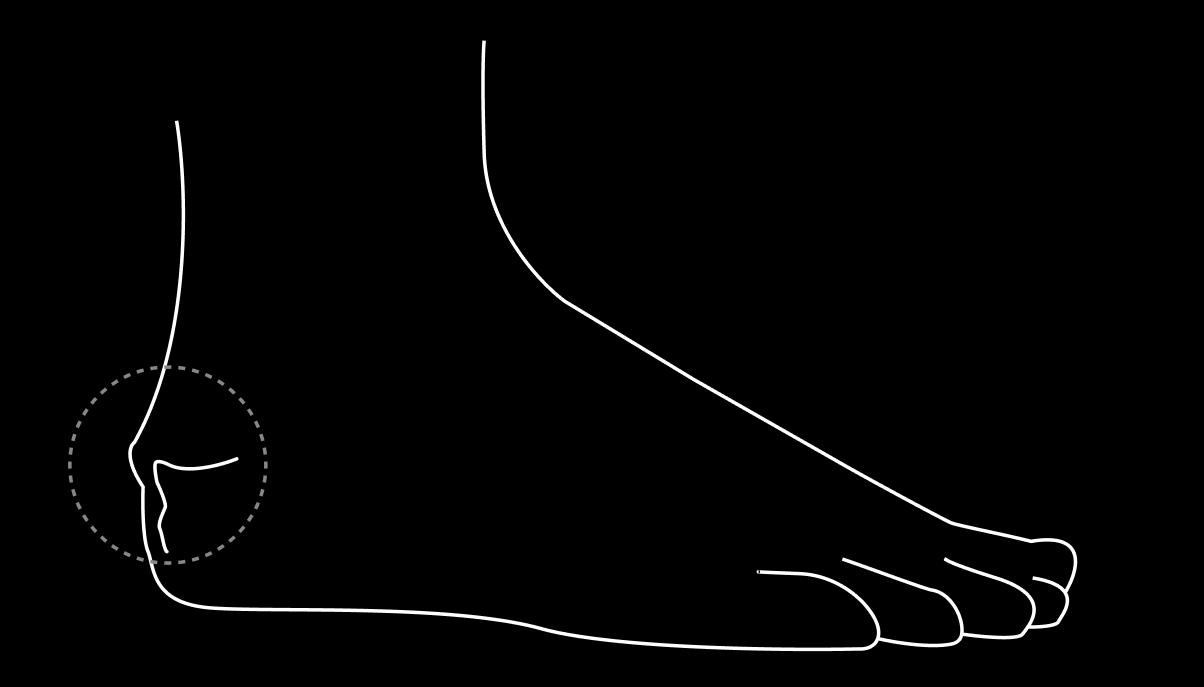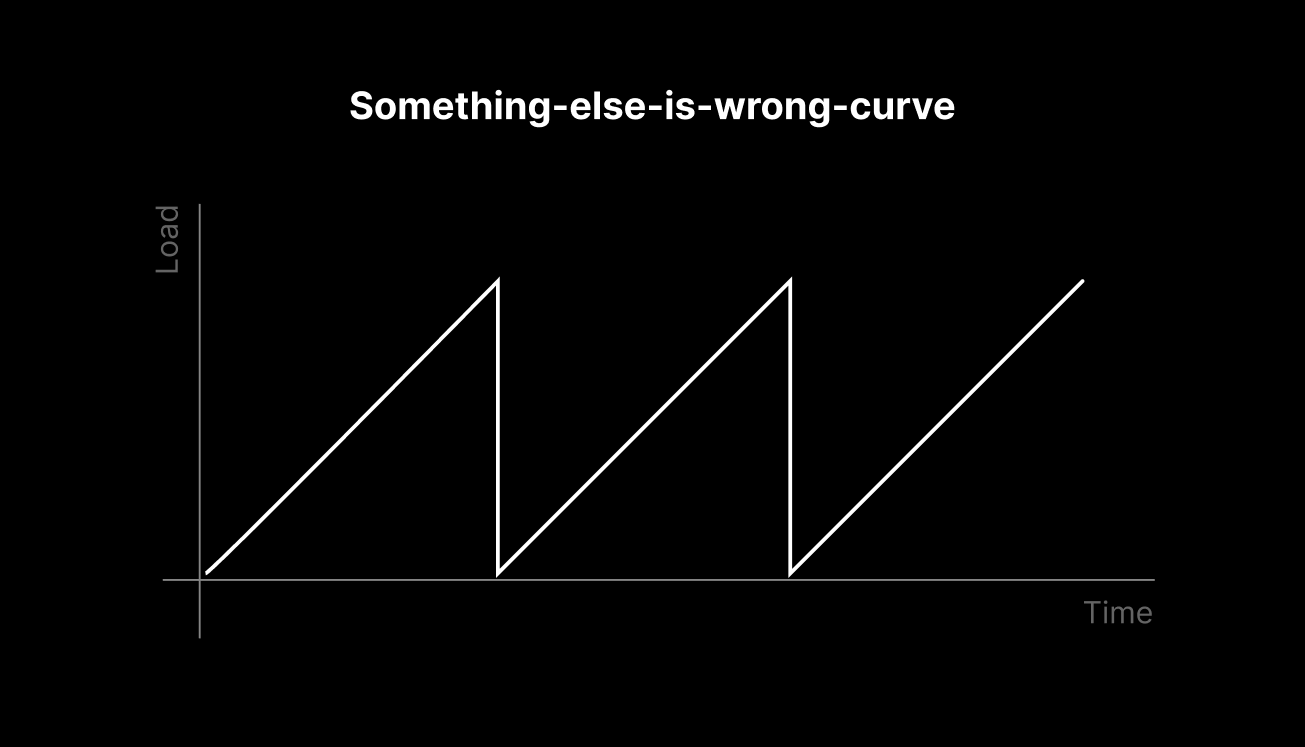Overcoming Haglund's Deformity
Haglund’s Deformity is a real pain for runners suffering from it. The syndrome can be seen as a little (sometimes even pretty big, yikes) bump in the area where the Achilles tendon attaches to the heel bone (see image below). Wikipedia states: “The soft tissue near the back of the heel can become irritated when the large, bony lump rubs against rigid shoes.” Running 90 km per week can cause a lot of friction in this area. In this post, I will reveal my story of overcoming Haglund’s Deformity with an honest retrospective on the condition and rehabilitation process. I will start with a little background about myself and my running career, followed by an explanation of how training with Haglund felt before realizing what it was. Then, I will describe my experience with a tough rehabilitation scheme and getting a setback. Afterward, I will provide details about the diagnosis and guidelines I received from the leading Danish sports doctor, Mads Munster Karlsson. These guidelines were put into action in the next section, where I will describe the rehabilitation process from 3 x 5 minutes to a 100 km week, which took just over 1 year. The rehabilitation process led to my first competitive comeback race, a 10 km road race in Aarhus in March 2023. Finally, I will share my tips on what worked for me and what did not.

My story
I began my running journey in the awesome year of 2011 during my 10th-grade year at a boarding school that offered a running course. My dear friend and I joined the team, aiming to complete a half marathon in just three short months. We were foolish and paid the price with agonizing runner’s knee and shin splints, which plagued us on and off throughout that school year. At the start of high school, I focused on building my strength and perfecting my running form to rid myself of the most troublesome shin splints.

In 2013, I joined the Esbjerg Athletics Club with the ultimate goal of completing a full marathon. Before long, I had run several half marathons, 10km, and 5km races. However, the Copenhagen Marathon of 2014 left me feeling unfulfilled, and I began to question if the marathon was truly my calling. My coach at the time, Morten Basse, recognized my natural talent for middle distances and encouraged me to focus on them instead. Under his guidance, I entered the Danish Tournament for the elite class, where I was tasked with keeping up with the pack on the 800m run. I ran the first lap in a staggering 59 seconds and the last lap in 77 seconds. Although I finished in last place, I felt a thrill like never before and got to taste what lactate tastes like.

One year later I moved to Aarhus, where my approach to running became more serious. I joined Aarhus Fremad Athletics and quickly became the club champion in 800m. One year later I ran 2:00.69 and the year after in 2017 I ran 6 personal bests ending at 1:57.4. In 2018 I had the best season so far. It was…
Happy days
Had a lot of good races in 2018. I ran 1:55.87 with negative splits in the 800m and 2:32.32 in the 1000m. Woke up with a lot of stiffness in my calves/achilles, but I thought that was just the way it should be. I also ran a PB in 5000m at 16:28, in a race with a first kilometer in 3:00. The goal of 2019 was to compete at the Universiade. Had to run a 5-second personal best to qualify.
Before realization of it being Haglund’s
Ran into some stomach issues at the start of 2019, which killed the dream of running at the Universiade. Still ran a personal best on 400m and 200m that season. My achilles tendons became more and more irritated and in 2020, I thought it was nothing serious, but at the end of the season the morning pain was so bad that I walked like an old man in the mornings, and at one point I treated it as it was achilles tendinitis after seeing one of the best physiotherapists in Denmark. The doctor gave me a blockade to get rid of the inflammation and the physio gave me a set of exercises to do every day! We are in the year 2021 and calves are growing.
Rehabilitation while believing it was achilles tendinitis
The rehabilitation exercise where as follows: Stiff knee single-legged isometric hold of (4 - 5) x 45 seconds on both legs followed by the same with a bent knee. Two times per day. The physio said that my gastrocnemius muscles were too weak and had to be strengthened. The exercise with a stiff knee strengthens the gastrocnemius, whereas the soleus is strengthened with a bent knee. It was a tough rehabilitation scheme and the calves were hurting. The physio also instructed on how fast to progress the running and it felt like baby steps. He said it was important to add additional height to the heel of the shoe. He did not mention anything about the type of shoe and whether or not it was a good idea to run in spikes. This resulted in several setbacks and two injections of steroids to get rid of the inflammation, which kept coming back. After several iterations of this, stuck in the something-else-is-wrong-curve, I had to try another option. Let’s go see the best sports doctor in Denmark!

Breaking out of the something-else-is-wrong-curve
At the end of the year 2021, I was consulted by Mads Münster Karlsson at Aarhus University Hospital. He gave me a steroid injection in bursitis near the achilles, grounded my running for a week, and ordered an x-ray scan. The results from the scan were that there is a Haglund’s deformity syndrome. From January to March 2022 I very slowly gradually progressed my running load.
Rehabilitation/comeback process (1 year)

One thing that was important for Mads, was that I listened carefully to the signals from my body. I was asked to pick the daily level of pain on a scale from 0 - 10, where 0 is painless and 10 is awful. After three months of rehabilitation, the weekly mileage hit 40km.

The progression continued and I ended the year with 90km as a peak. My weekly mileage is displayed in the following graph from 2022:

In the summer of 2022, my colleague told me that Vaseline could be used to minimize friction in shoes. He had been working as a physio before starting his career as a developer and suffered from blisters due to friction while playing football. After using Vaseline, he never had blisters again, he said. I tried out the trick in my running shoes and felt that it worked. The redness in the area was more or less gone. I began to think a lot about what kind of footwear I was wearing. My everyday shoes from Ecco got kicked out, because of a hard and stiff heel cap. I used Birkenstock and a hybrid shoe from Salomon with minimal pressure on the heel. Worked well!
At the end of the year, I bought a pair of Hoka boots that were also really nice for the area. When I go out and try new shoes on, the most important thing is that my heel does not hurt. The second most important thing is that the heel should be locked into place to reduce friction. After that comes look and general feel.
Getting back into competitive athletics
Training for competitive athletics with Haglund’s is much like keeping the balance of a line dancer. I think most elite runners feel that they are on the tip of getting injured. I am in close collaboration with my coach to keep running without getting injured. We have decided to implement several action points to keep the body healthy:
- Strengthen the calf two times per week in the gym. Also, keep the rest of the body fit with weightlifting.
- Have one day off every week. Usually, I take my Fridays off.
- Train hard on the weekends. More time to rest and prepare the body and mind. On some weekends we do double-threshold on Saturdays.
- If the body is sore, take a day on the home trainer or an easy week. No need to rush. Consistency is key.
- Sleep at least 8 hours per night. Cannot keep this promise every night. A wise man once said that you should get at least 8 hours per night 80% of the time. The rest of the time you should have fun.
My tips
This rehabilitation period has taken about three years. The period could have been shorter if I knew what it was and how to treat it early on. Other athletes should not suffer in the same way if possible. I have previously done a lot of research in forums, scientific articles, and elsewhere on the internet. Most of the stuff says that surgery is the only way to fix it. It is mentally tough to read that everywhere, and then keep pushing on with the slow build-up phase.
- Make sure that your everyday shoes are nice to your achilles and pump bump. They shouldn’t leave any pressure marks or hurt while walking. Also, the heel cap should not be stiff.
- Your running shoes should also be comfortable and fulfill the same criteria as your everyday shoes. Additional heel drop can be added below the heel to minimize the load on the achilles. This can especially be useful when your running form is getting worse due to fatigue in a competition. The best shoe I have had so far is the Saucony Pro 2. The heel cap felt invisible.
- Use kinesio tape or Vaseline to protect your pump bump from direct friction. Depending on the type of footwear and weather I prepare the heel before a workout to minimize stress. I use two pieces of kinesio for each foot. The first piece starts under the heel and follows the achilles 10cm up the leg. The other piece crosses this on right around the pump bump. This video can be used as inspiration. I only use two pieces at most and for most runs, I even just use a single piece per leg.
- Elevate your heel if you feel pain in your achilles/Haglund. This is a way to reduce the stress that it takes. I run with a 1cm elevation in the heel on some of my running shoes.
- Strengthen your calves and achilles. I do 3 sets of strengthening exercises for my soleus and 3 sets for my gastrocnemius.
- Limit your time running with a cold achilles. Keep it warm and carefully consider if the cross-country season is worth the risk. My biggest setback came after a cross-country competition.